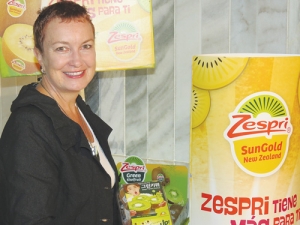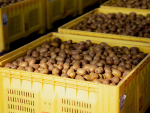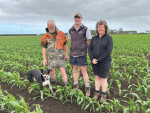Harnessing the collective power of the kiwifruit industry is critical to its success, according to Zespri's general manager of marketing and innovation, Carol Ward.
Talking to Rural News ahead of last week's Zespri innovation symposium in Tauranga, Ward says the objective is to ensure everyone in the kiwifruit industry is aware of what Zespri is doing in R&D and innovation. The symposium will tell what Zespri is doing and get feedback on it.
And attendees will hear about what Plant and Food Research is doing and about entrepreneurial test work by growers.
"The connection with the grower is essential. The industry structure and our good communications mechanisms enable us to pass on new lessons to growers. We have a highly engaged grower base... adopting new technology and new practices; so we can meet the consumers' market demands.
"Also, we keep a close eye on consumer needs and desires about the fruit – taste, health properties and convenience aspects. We make sure those signals translate back to the breeding programme and through to the orchards, via the taste programme and other initiatives like that."
Ward says growers understand that Zespri's premium position in the market depends on quality, great-tasting kiwifruit. She sees strong support for understanding the market requirements and how this can be achieved by what happens in the orchard.
"From Zespri's perspective, we have a strong motivation to set our payments back to the growers that reflect those attributes of the fruit, which bring value to the industry. It's about strong grower market alignment," she explains.
There is a long lead time to bring new varieties of kiwifruit to market – 15 years is the norm. And not only does the fruit have to taste right, it has to be commercially viable and have good storage life among many essential attributes. Trying to second guess what the consumer in 20 years may want is a big challenge.
"Zespri invests heavily in consumer insight research and we do qualitative and quantitative research across all of our major markets," she adds.
"We also do testing and home placement and retail trials to try to keep in touch with the consumer.
"Not only in kiwifruit but in fruit generally that is important because we want to grow the share of kiwifruit in the [consumer's] fruit basket."
Ward says though markets differ, the common factor among all consumers is that they vote with their taste buds. Hence the huge effort that goes into producing fruit consumers find irresistible.
"Fundamentally we need to be able to deliver a great tasting fruit. There are secondary matters such as health, nutrition and convenience, the shape and aesthetics of the fruit and many other things."
Ward says in some countries kiwifruit is regarded as a snack while in others it is a dessert. And local fruit make a difference – "mangos in India or apples in Switzerland," she says.
The Zespri goal is to secure a position in the 'food basket' where kiwifruit has a high degree of acceptance and to keep growing volumes of green and gold varieties and, in future, red.



















